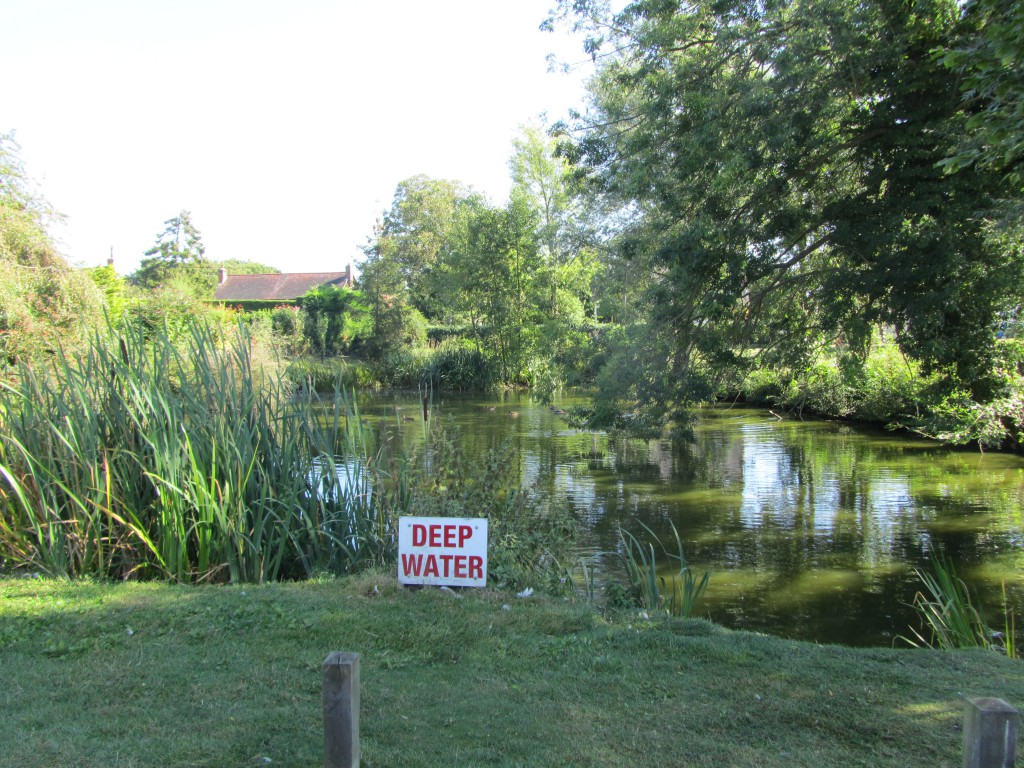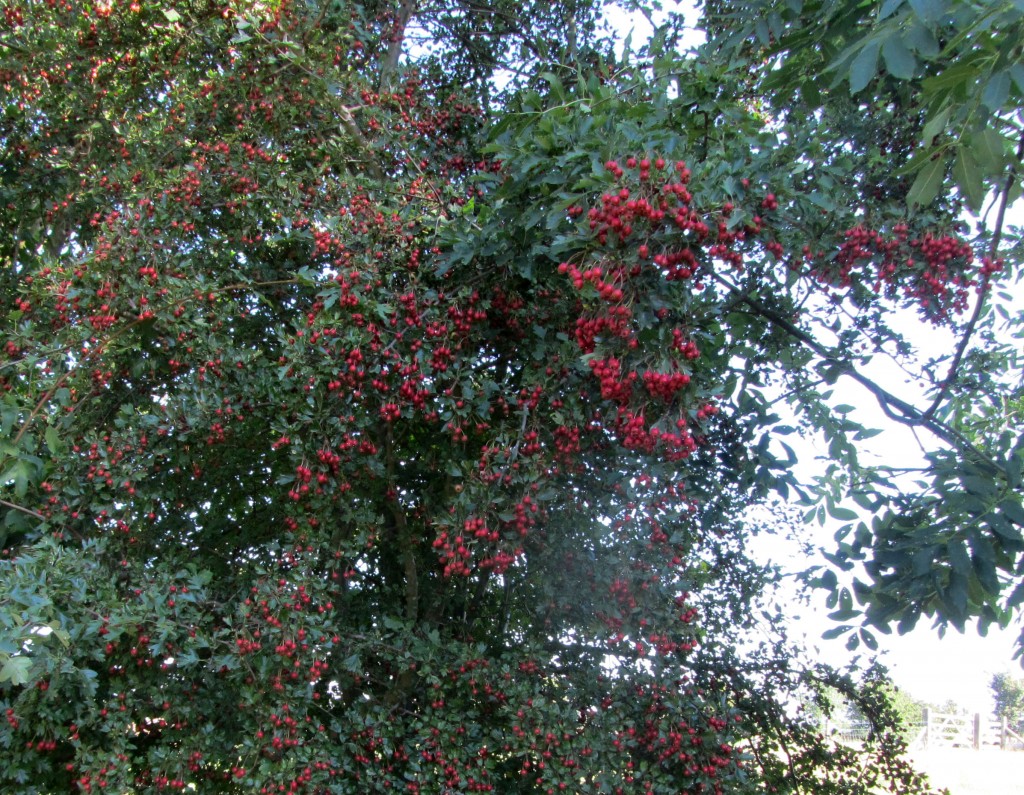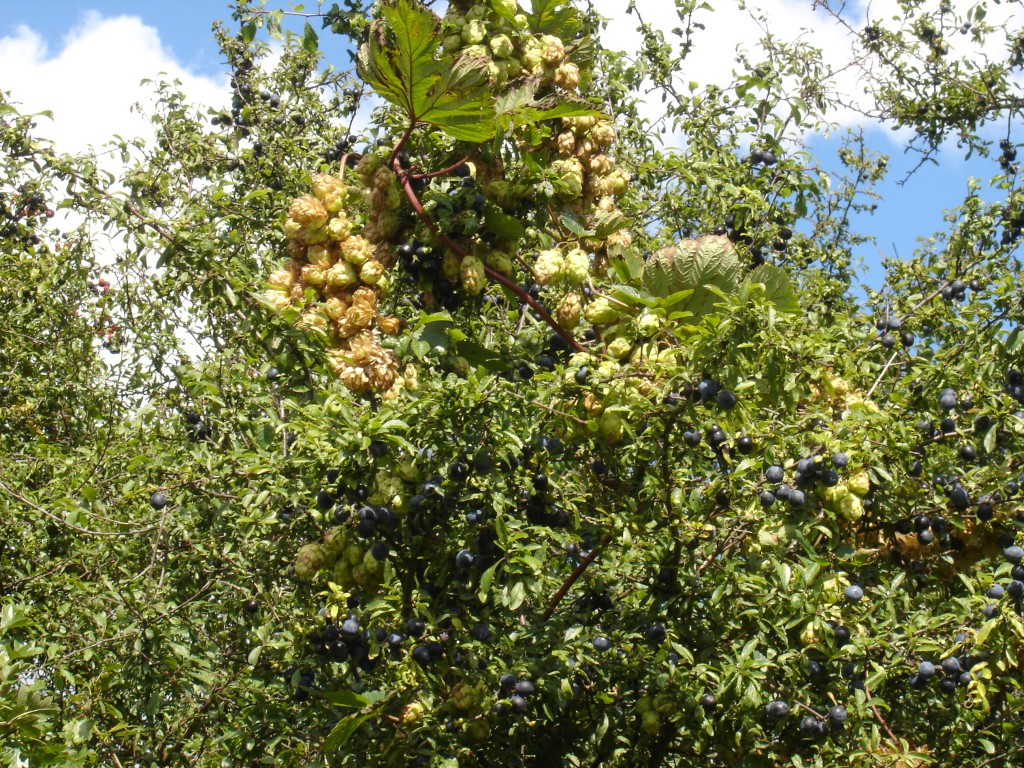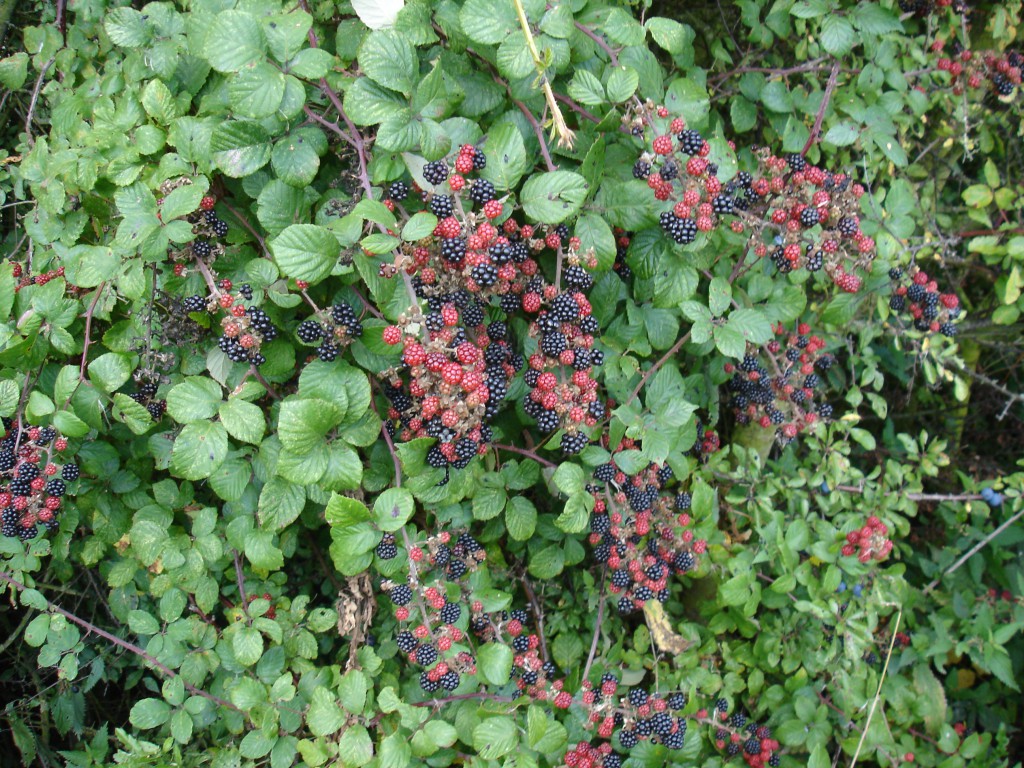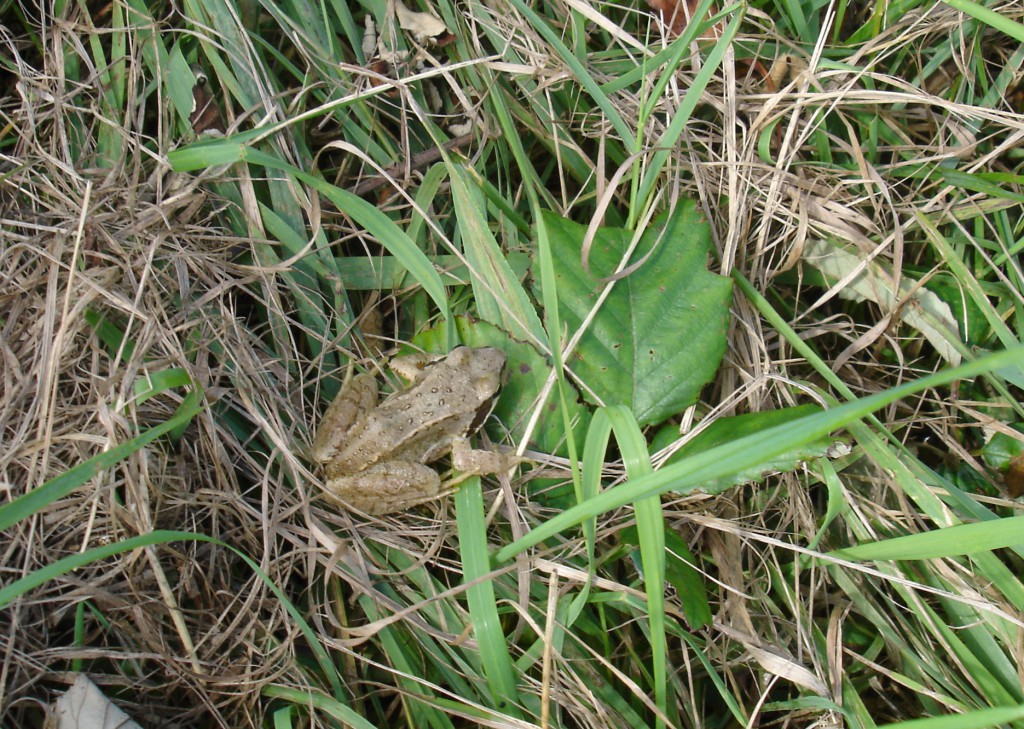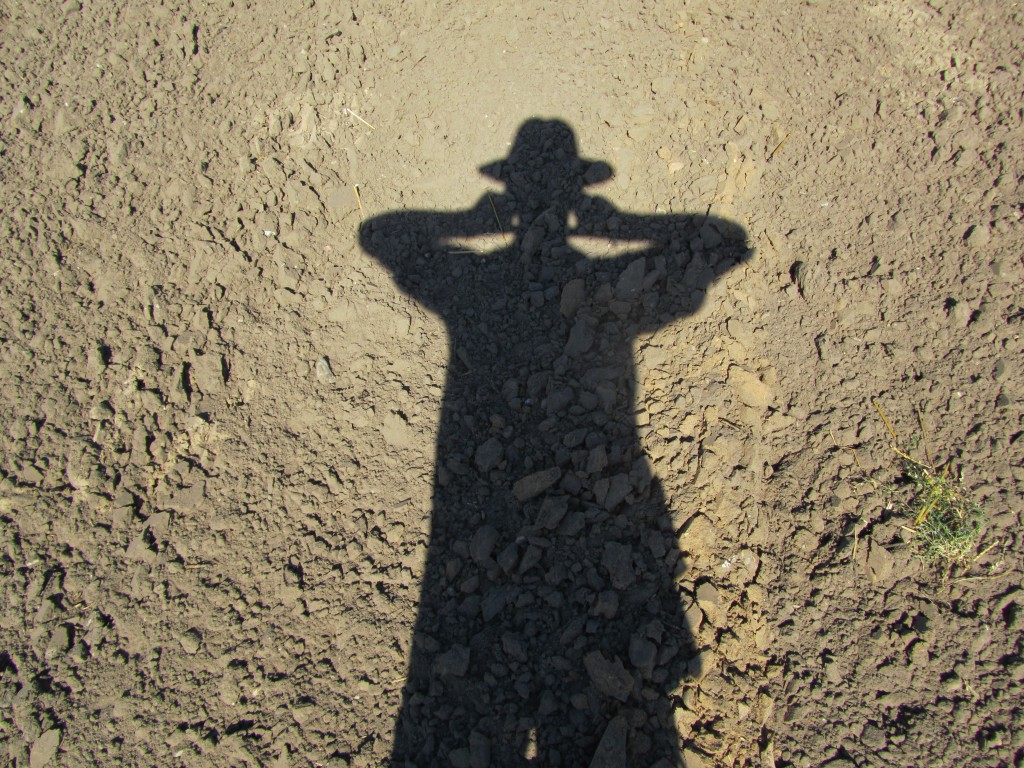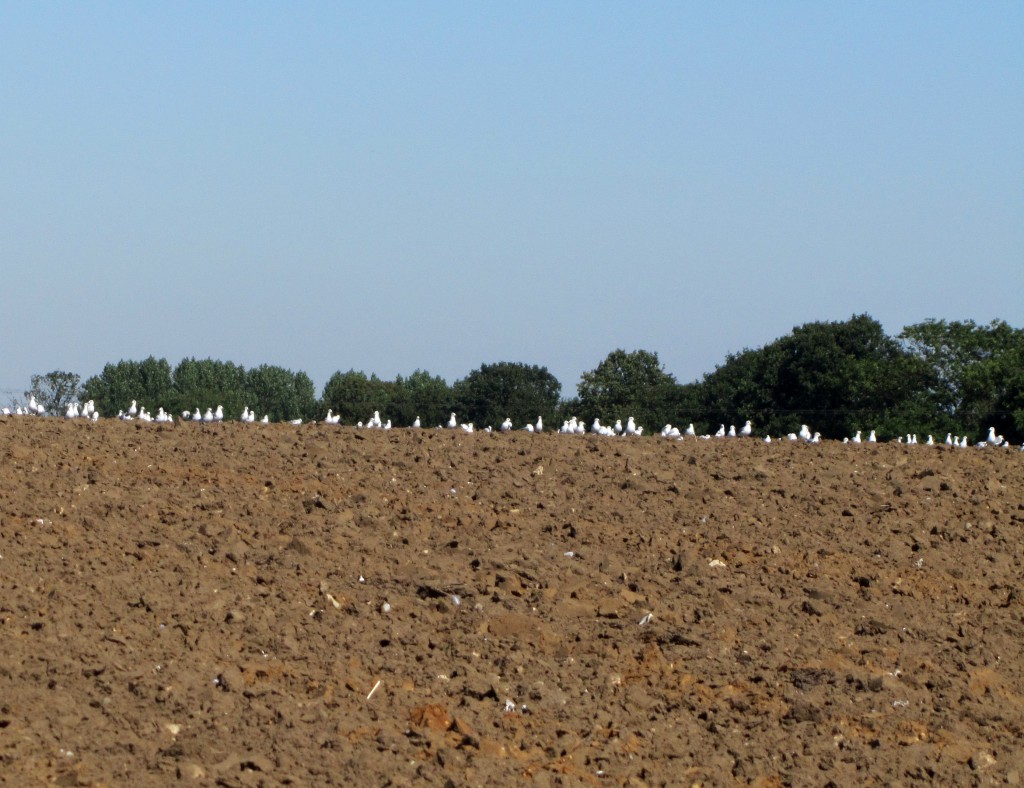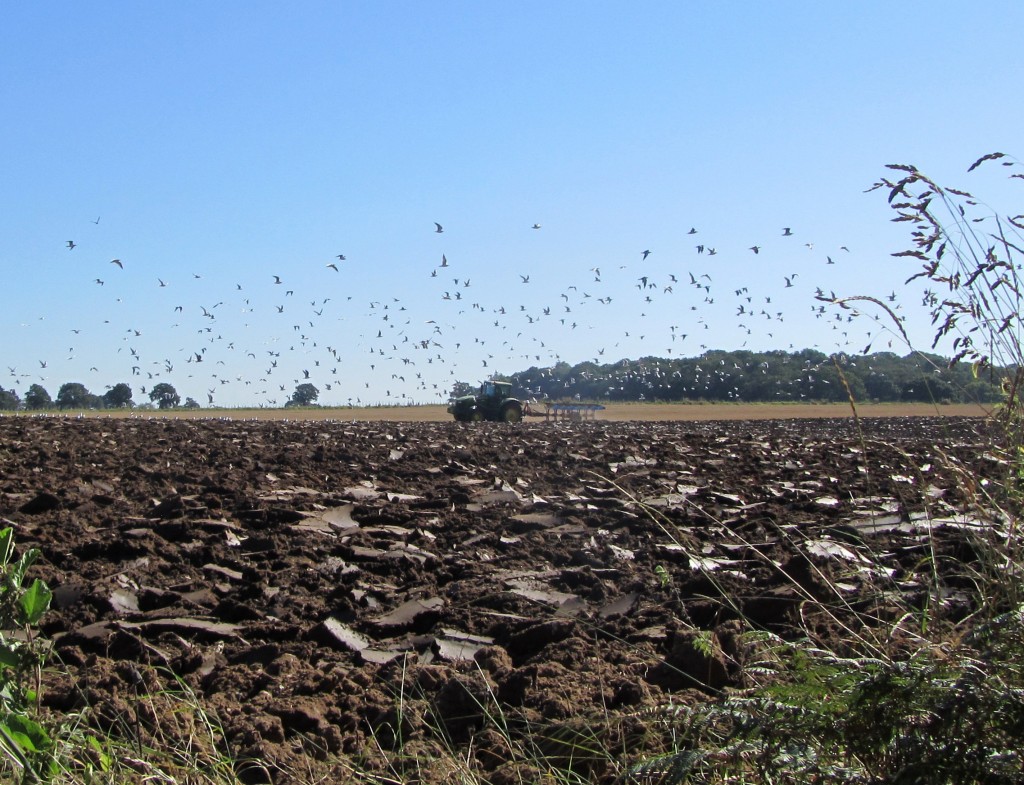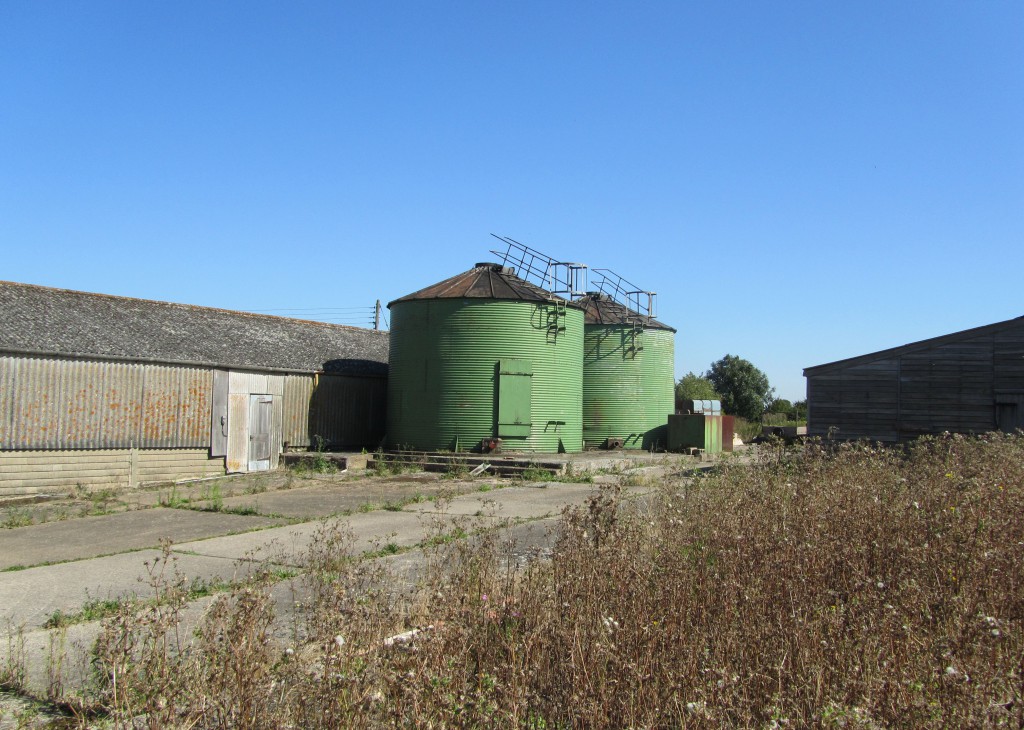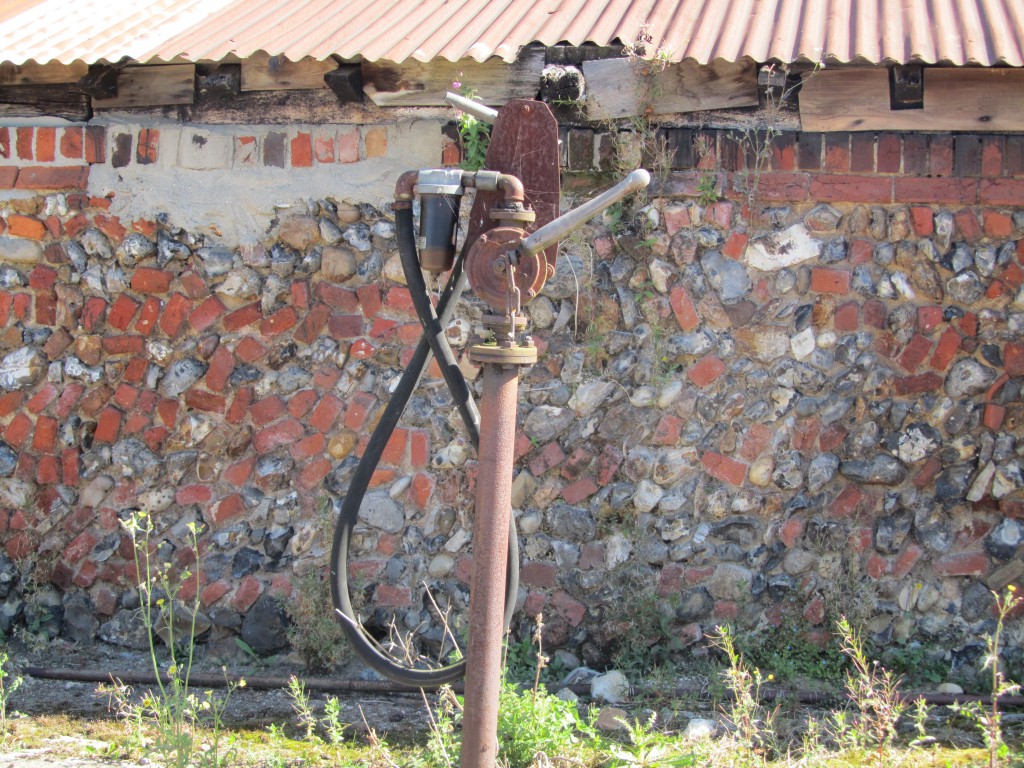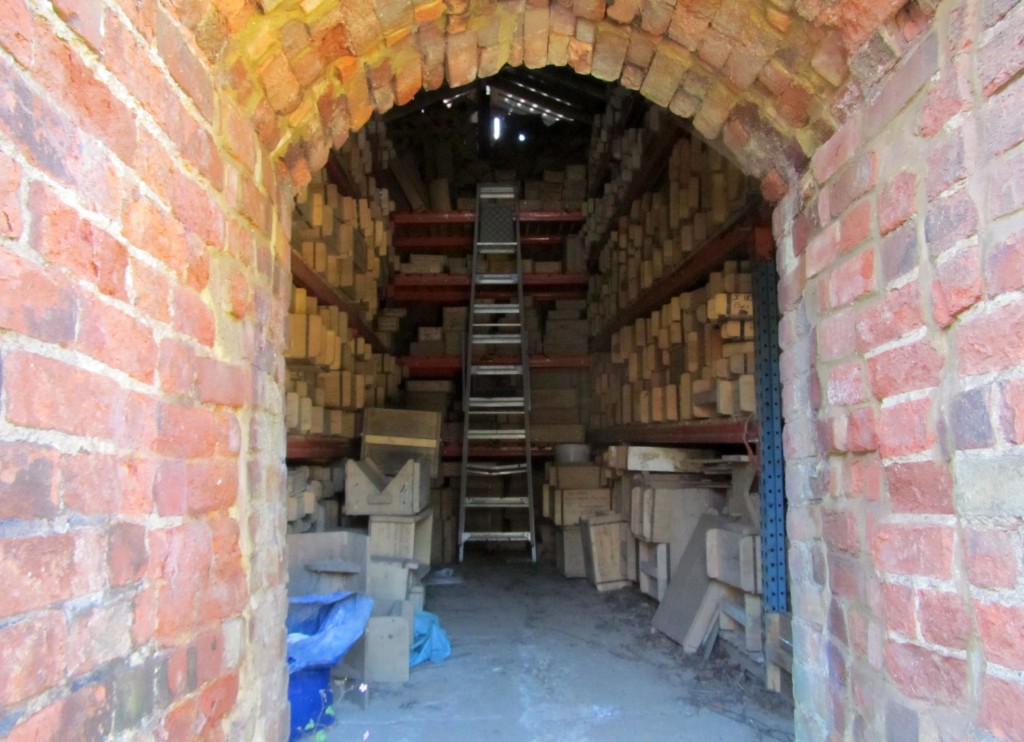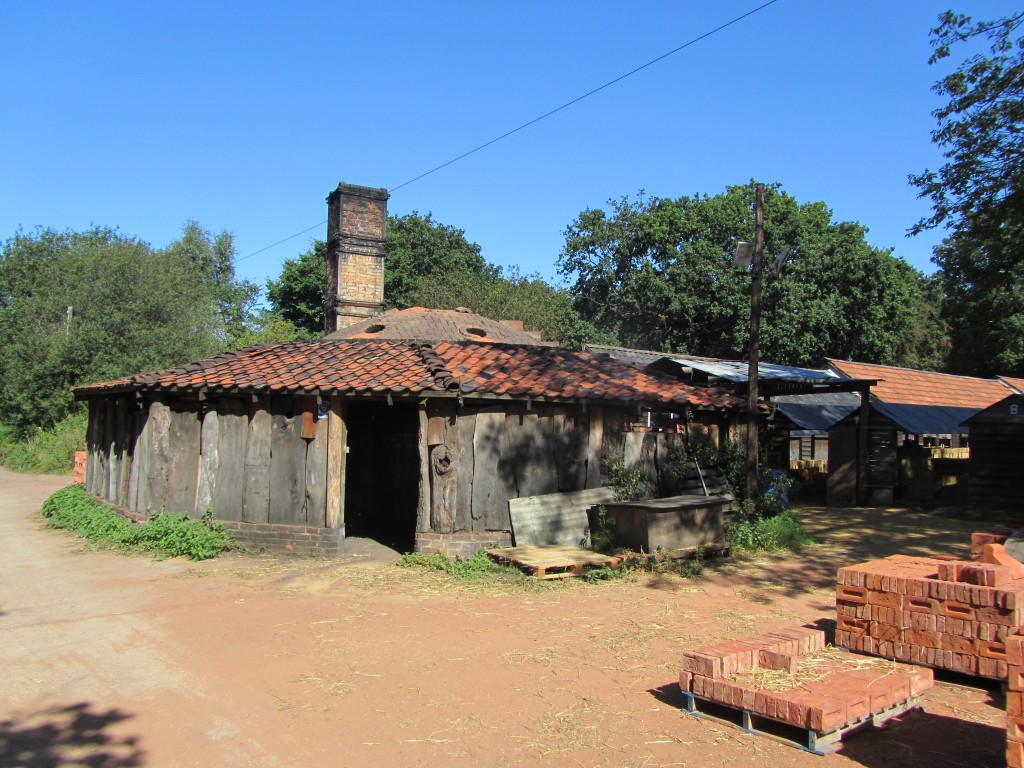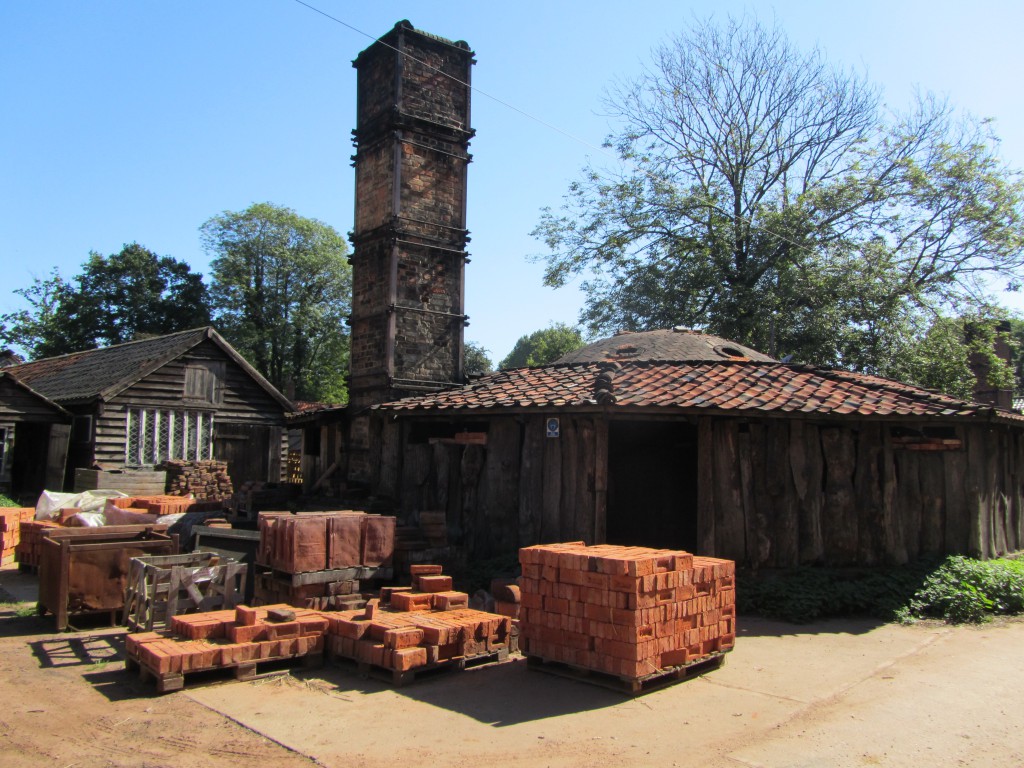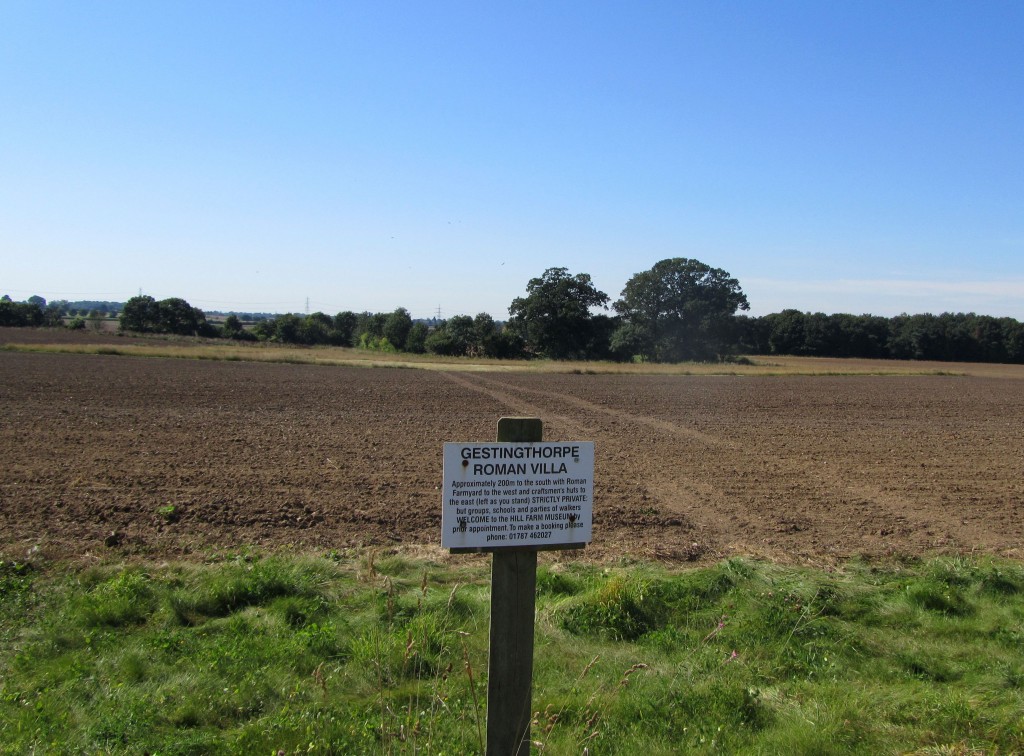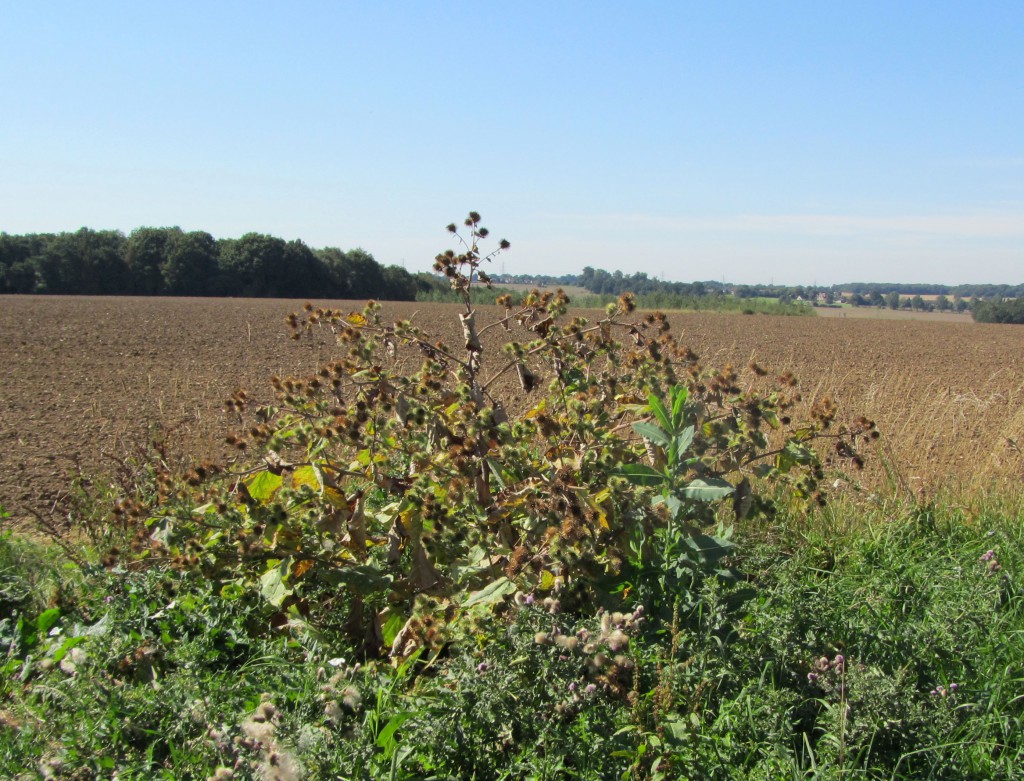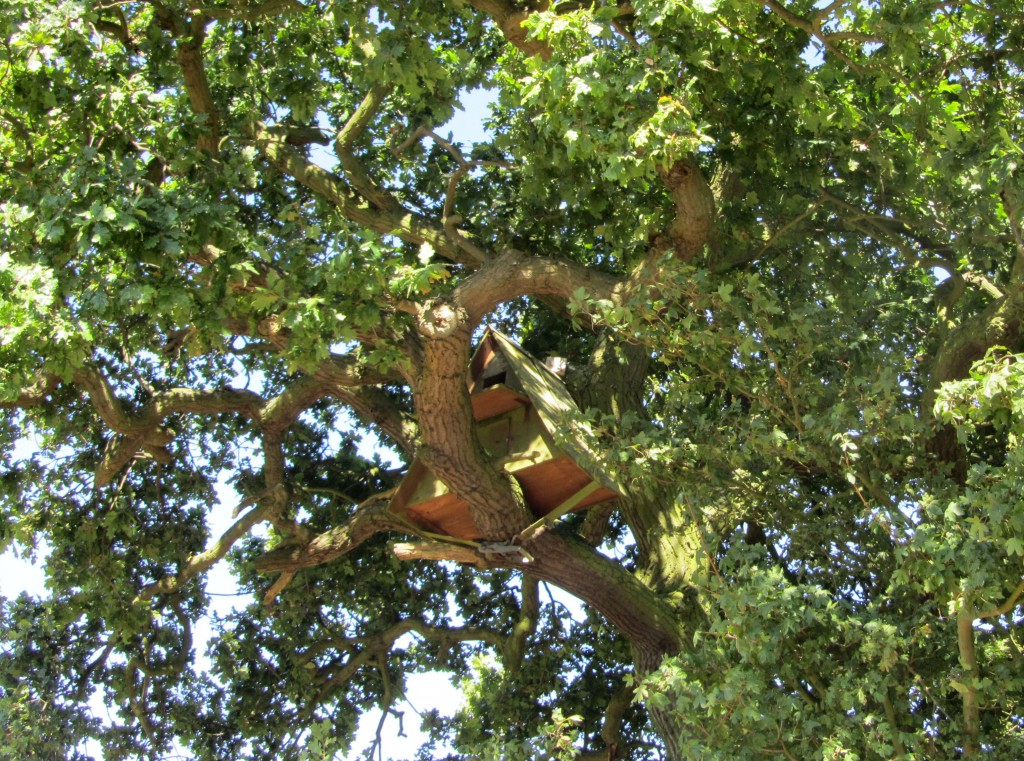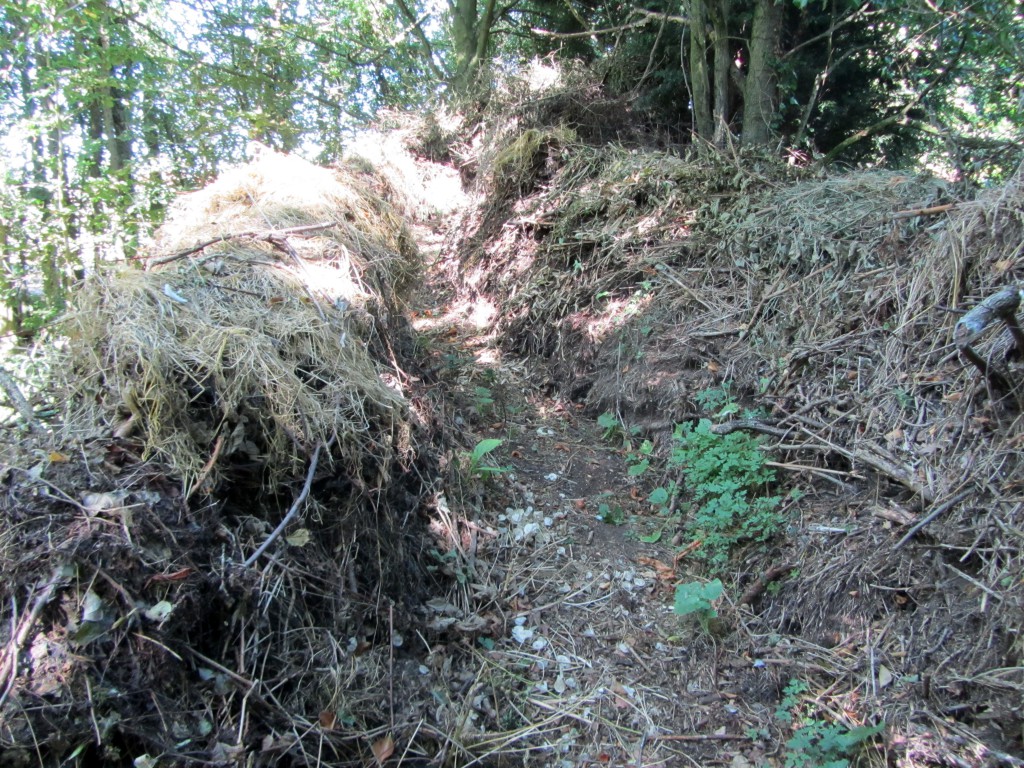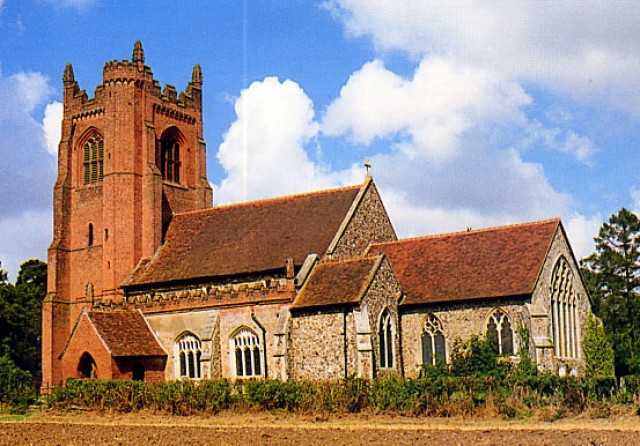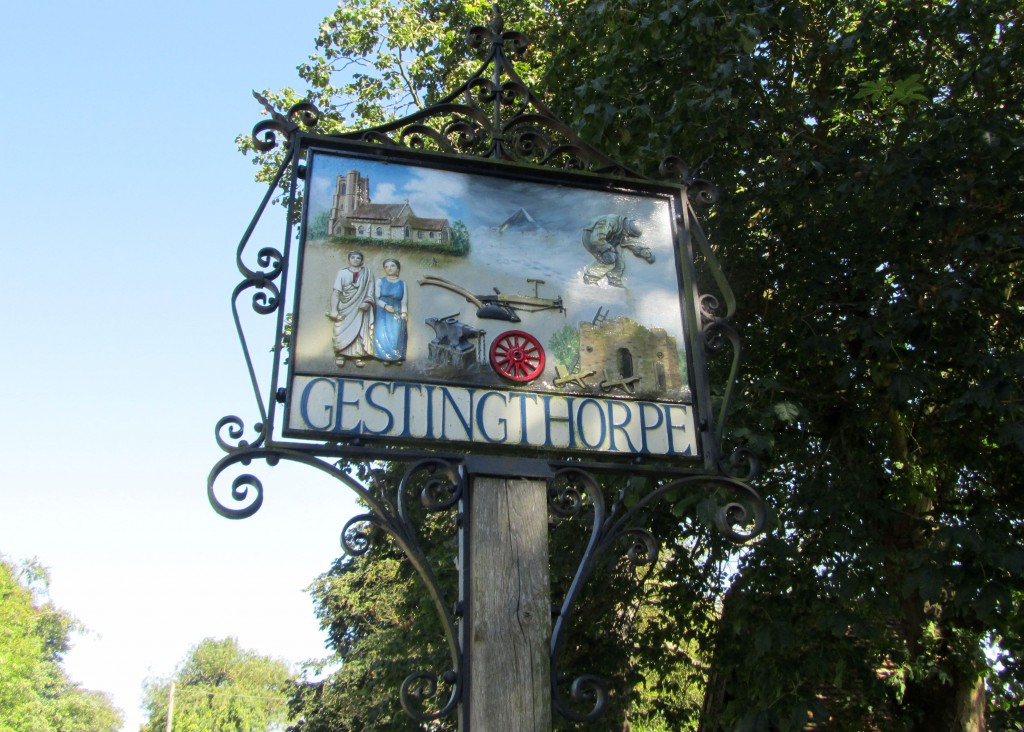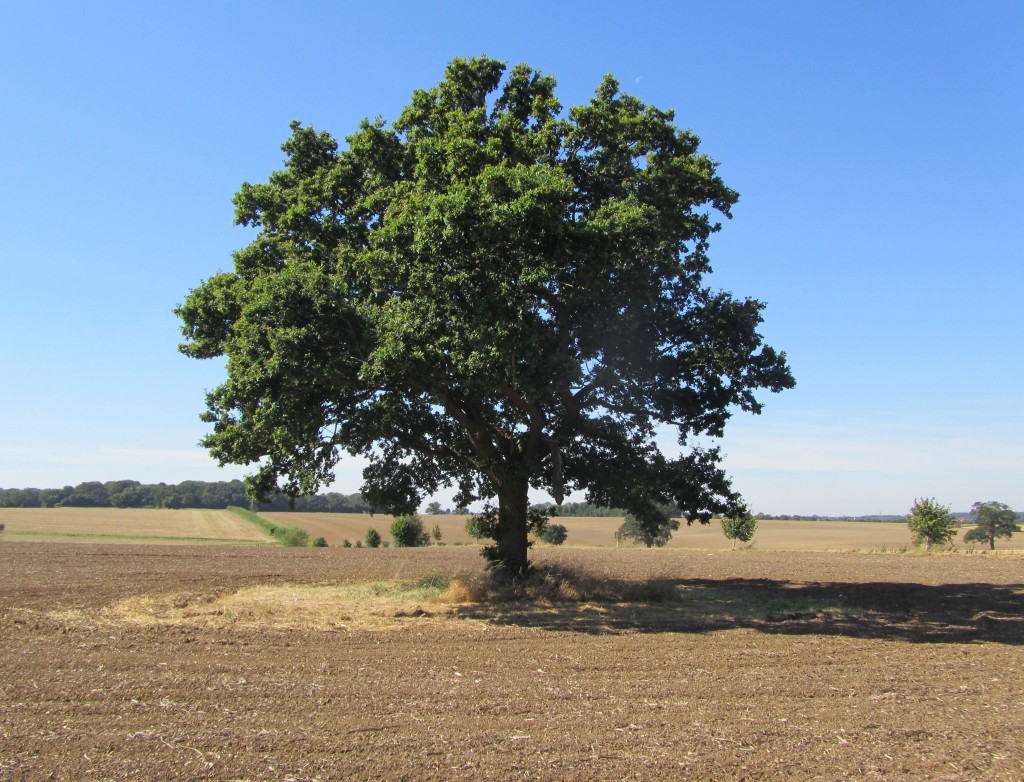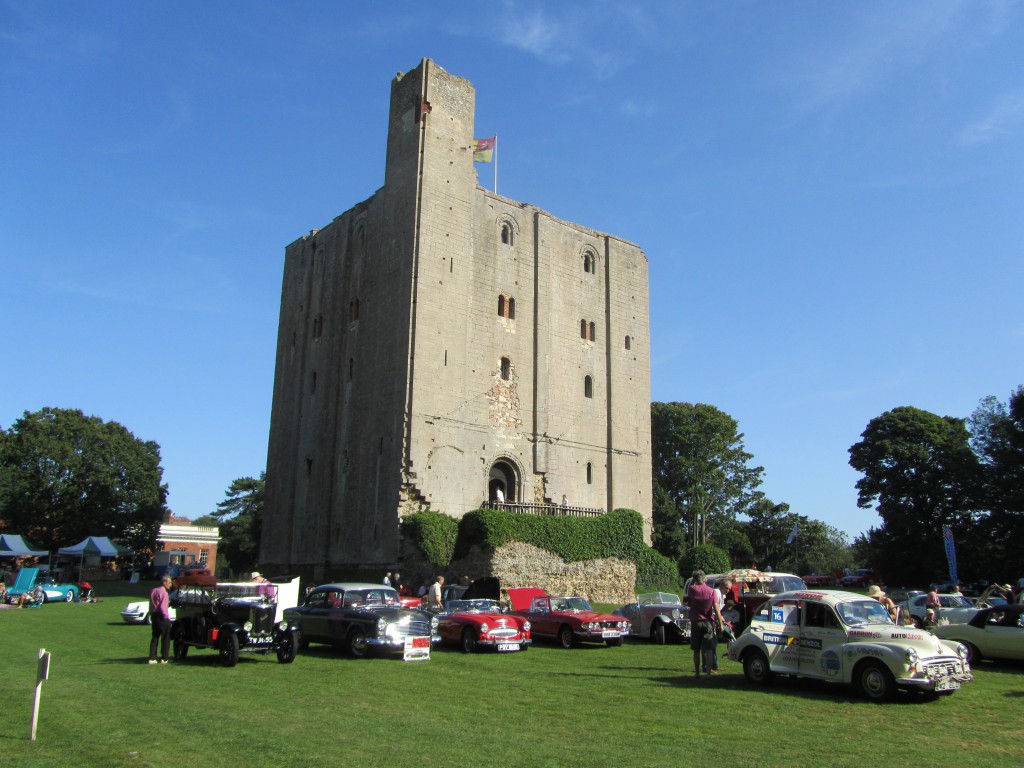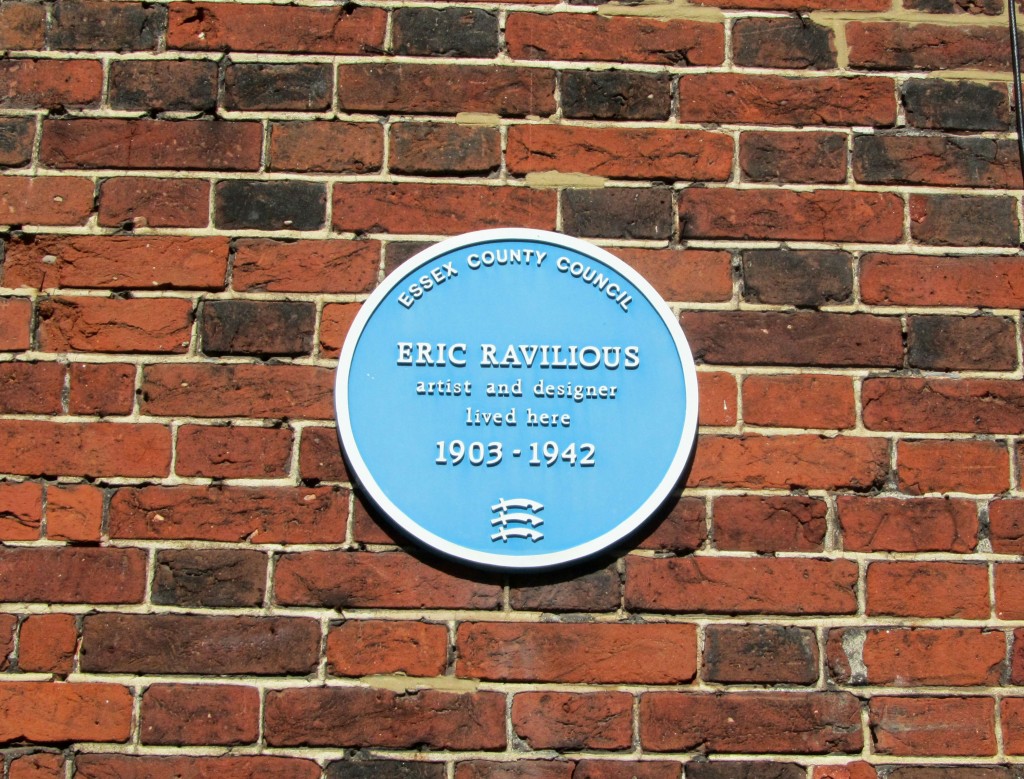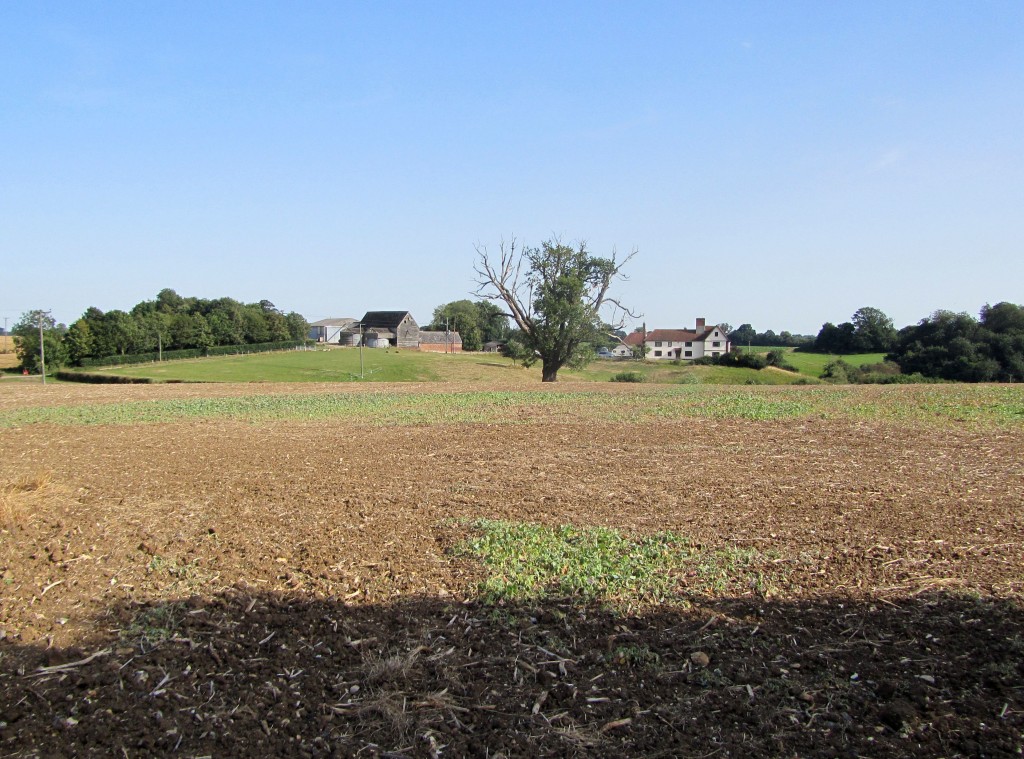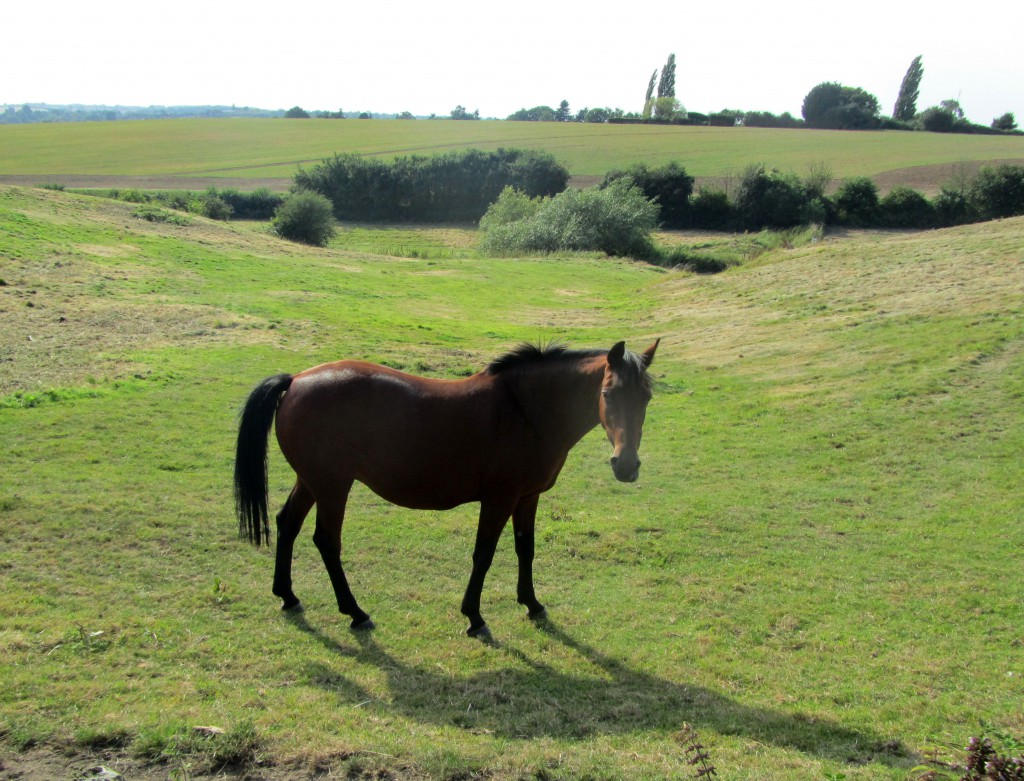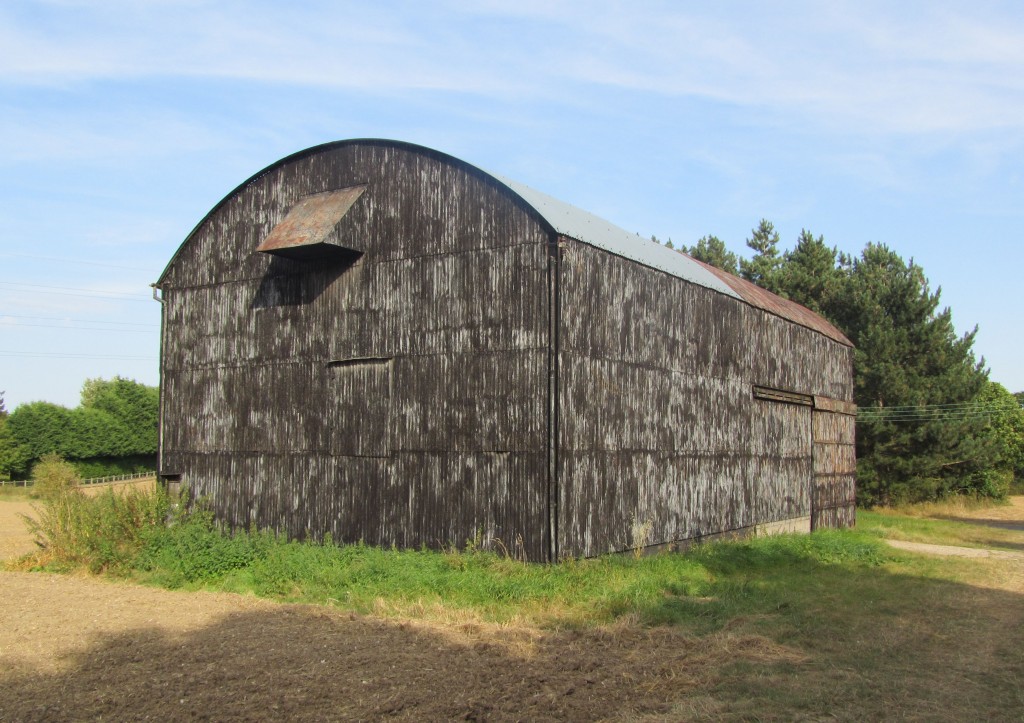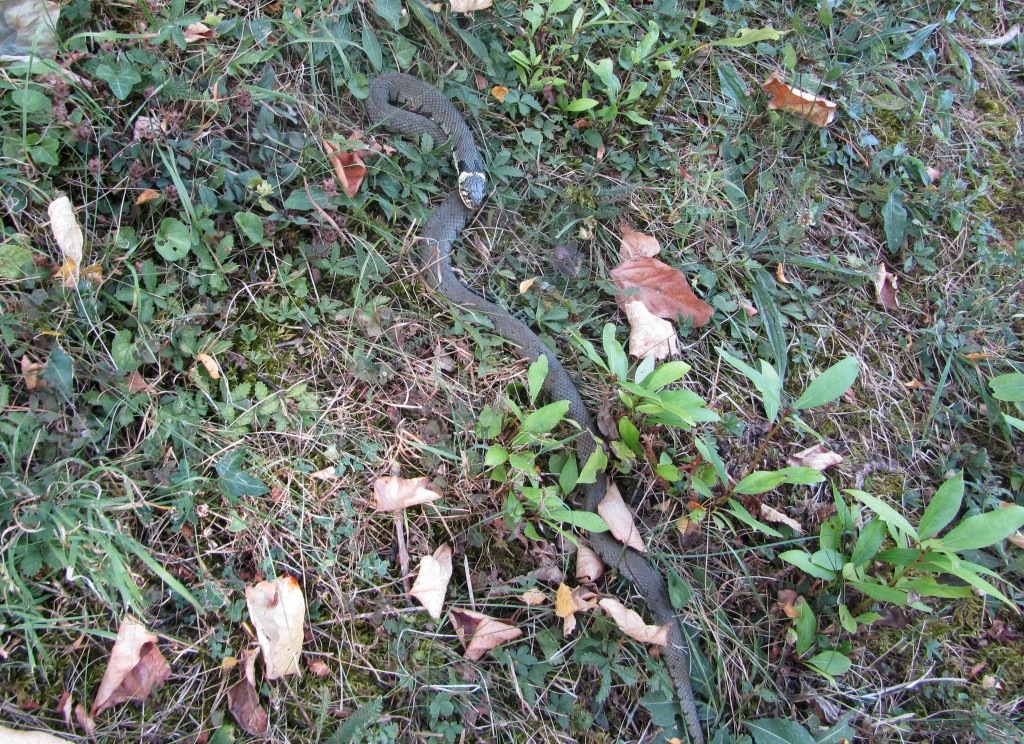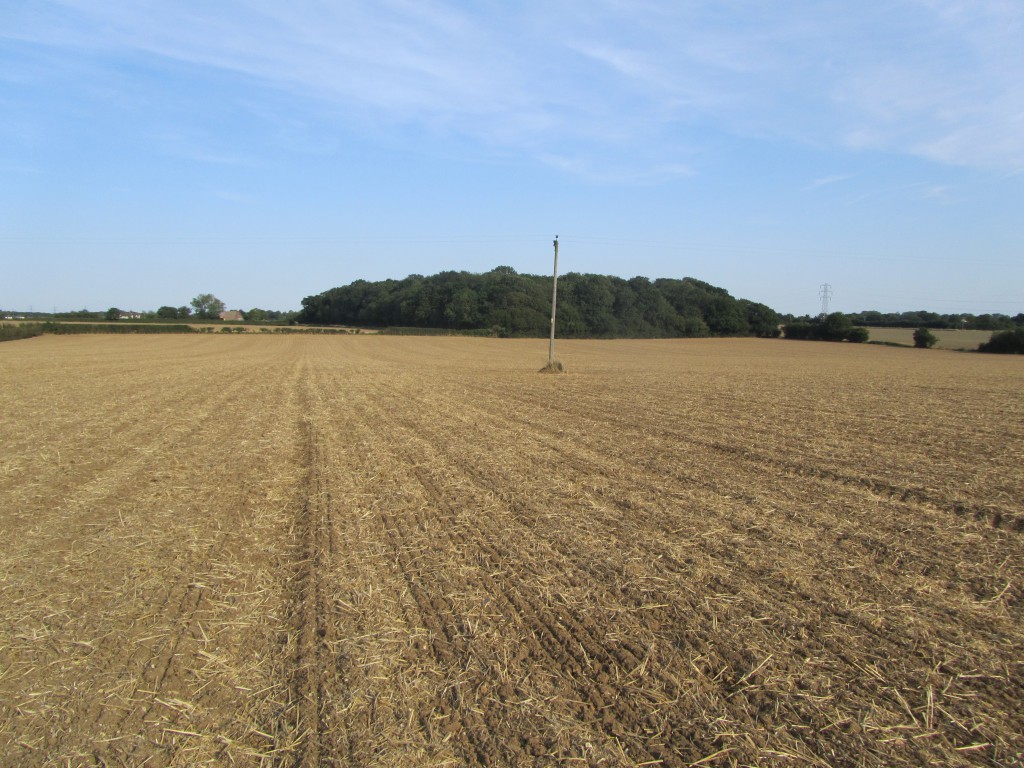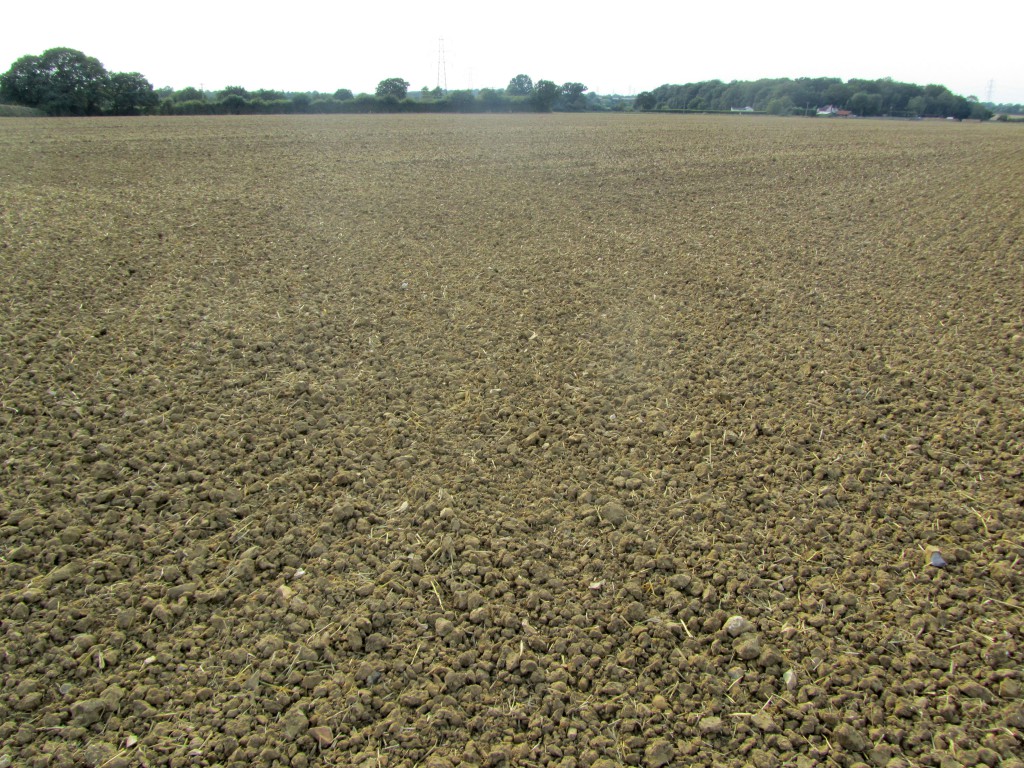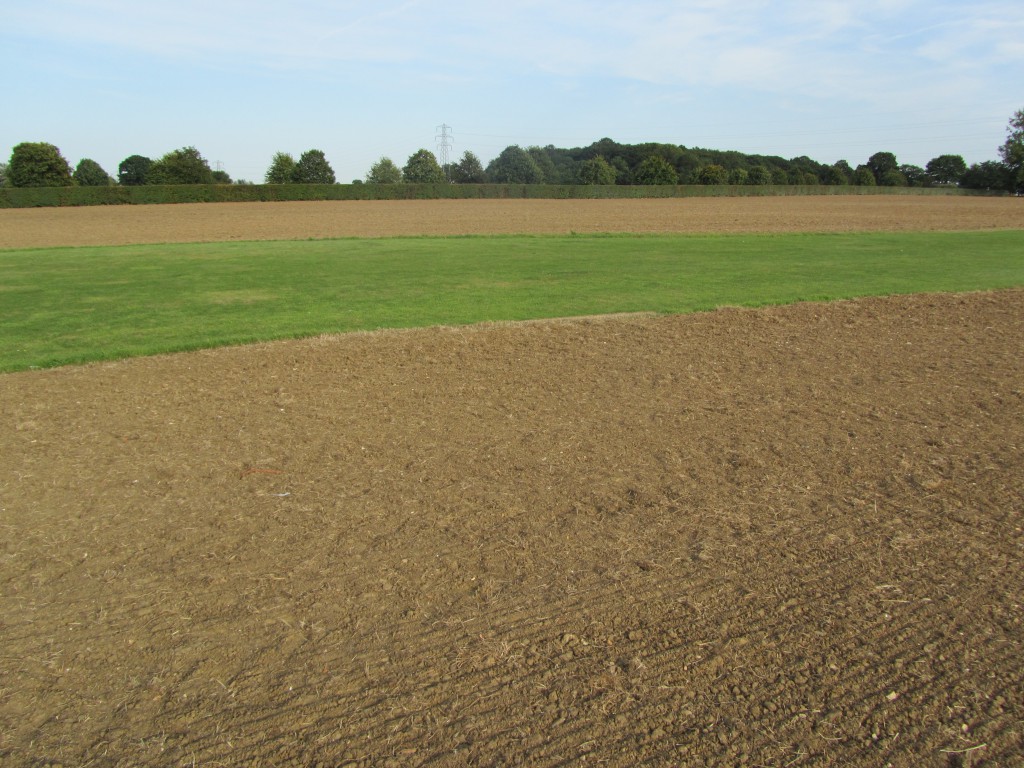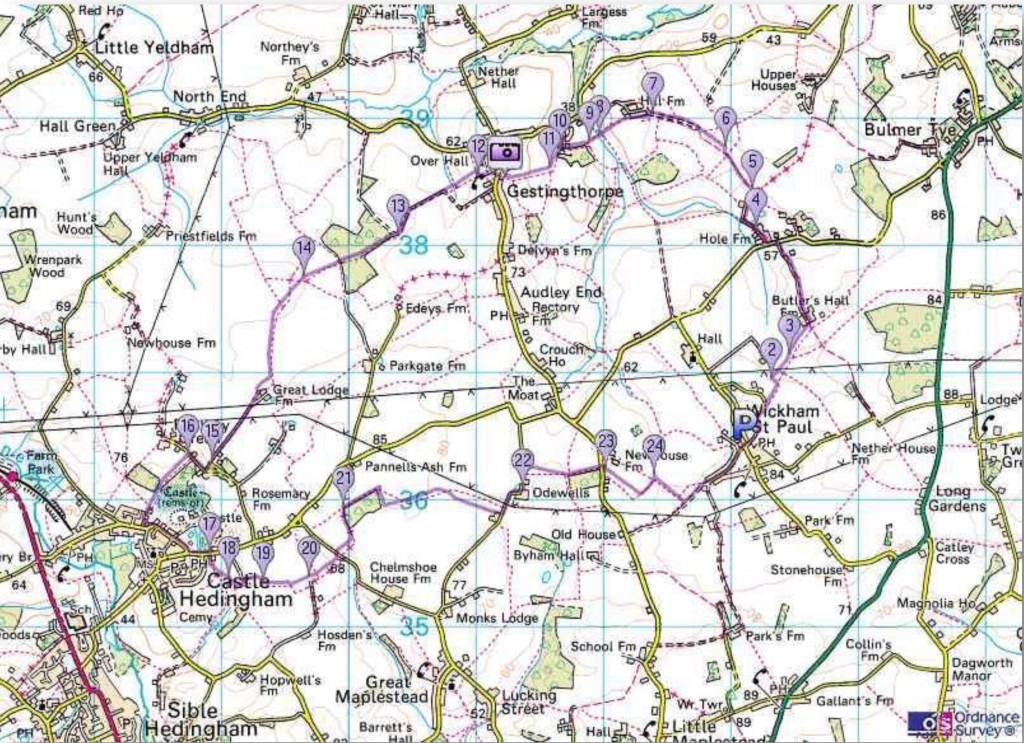We left the car by the duck pond at Wickham St Paul. After breakfast at Spencer’s Farm Shop of coffee and the best bacon sandwiches north of Columbia Road Market we walked down Rectory Lane past hedgerows heavy with hips and haws, and with elderberries and blackberries. There were hazelnuts and crab apples, hops, sloes, bullace, sweet chestnuts and acorns. There was ivy and bryony and guelder rose too, and there was lots of surprising blessed sunshine.
This summer has been described as one of the wettest ever recorded, so today’s unexpected sun was a welcome bonus. Walking was seeing, absorbing, rejoicing.
The fields were recently harvested so most were just stubble. Some had been ploughed, ready for sowing the next crop. My shadow looked like a scarecrow, and maybe it worked because crows were few and far between. Mostly flocks of seagulls were waiting to follow the plough.
We came through Butler’s Hall Farm then further down the lane to the Bulmer Brick & Tile Company.
We caught a glimpse of stored wooden brick moulds, though we did feel a bit like intruders. The place was deserted. This hive of industry was temporarily idle and we were free to wander amongst stacked pallets of handmade bricks and the wonderful timber-clad kilns. The unexpected quiet of the brickworks seemed to emphasize the quiet of the walk. We hadn’t encountered any other walkers since we left Wickham. It seemed unnatural. It was such a beautiful day but the paths were empty, and they remained so for the whole way.
Beyond the brickworks and down the green lane past the hidden pond swarming with dragonflies we came to a notice for a Roman villa which was not there. A conceptual piece. There was burdock and a house in an oak tree, perhaps for an owl. There were sunflowers and giant haystacks and a corner of a field set aside for ancient farm machinery.
Down into the valley across a stream and at a clearing in the woods there was an enclosure of manicured hedges around a remarkably well-tended lawn. Across the path, hidden by high, close, round bushes was a house, though it seemed more like a burrow. In the woods beyond was an ancient mound of grass cuttings and hedge trimmings with a ramped path leading up into the centre of it. If I were not a picture framer I think I’d like to be a brickmaker and live in a house in the woods like this.
Over the fields to Gestingthorpe church, a fine pile of possibly Bulmer bricks. The village sign illustrates local history and includes an image of Captain Oates whose family lived at Gestingthorpe Hall and who is celebrated in a centenary exhibition at the village hall. We walked alongside the walled garden of Hall Farm, across the valley and by a bird-scarer which at first sight from a distance seemed like a hovering hawk, then beside another field edge pond with water lilies and beyond the woods where the path suddenly stopped short. The waymarker points ahead and the directions indicate straight on to the small tree opposite, put the footpath had been ploughed up. The way forward was lumpy and ankle-twisting. The sun was baking hot and floating on the breeze we heard whinnying horses and Summertime played on jazz guitar. We were gone for some time.
We eventually arrived at Castle Hedingham where a party was underway. Maybe this was the source of the music though we never heard it again. The grounds of the Keep were occupied by an exhibition of vintage and veteran motor cars and their owners. It seemed a fitting location as similar cars already occupied other parts of the village. We had lunch at the Bell Inn where they served ale drawn straight from barrels behind the bar, just as it was when Eric Ravilious lived across the street at Bank House.
Just out of the village the directions led us to another disappeared path and what they described as a ‘dodgy’ stile. It hadn’t been repaired and was now overgrown with nettles and brambles. The horse seemed surprised to see us. We were getting the feeling that walking was not encouraged in these parts. Further along a waymarker indicated a path over a stubble field spread with fertilizer and currently being ploughed in, so we took the circuitous route around the edge. As we went we looked back and saw a pair of deer following the path we should have taken. After a zigzag wander skirting the fields we came to Odewells where a passing cyclist paused to lift a grass snake from the road.
The public footpath sign pointed across the field which unsurprisingly was now ploughed up. We began to realise why there were so few walkers. The final leg was over another ploughed field. The path was vague then non-existent. We began to think paths were like hedgerows, grubbed up to make way for bigger fields and bigger machines that couldn’t function in confined spaces. Then just outside Wickham St Paul there was a ploughed field with a very delicately maintained ribbon of green that showed farm machinery could be nimble and it was possible to upkeep a path.
It’s a small complaint. Walking through the fields, like walking through the brickworks, was essentially walking through someone’s workplace. I was reminded to be thankful for access to the countryside and to tread gently, to Follow The Country Code and to Keep Britain Tidy but mostly just to breathe!
Walk the walk – Castle Hedingham


